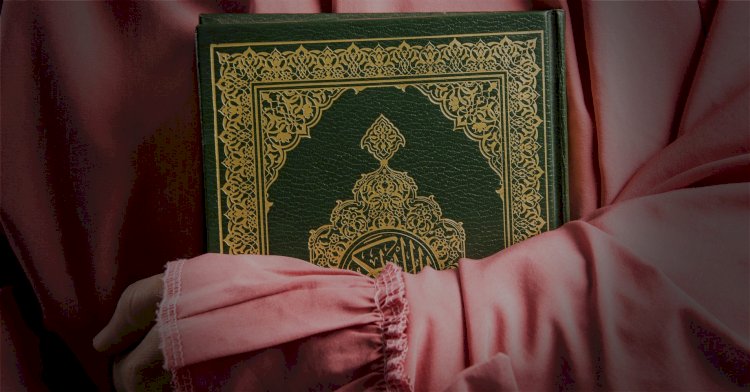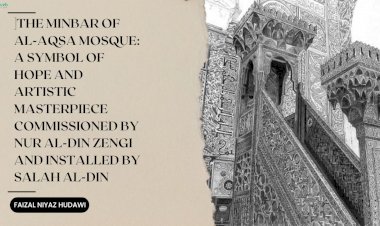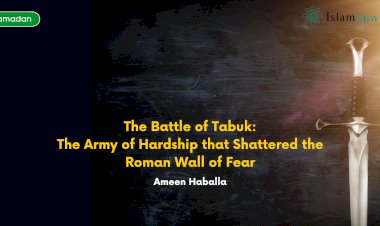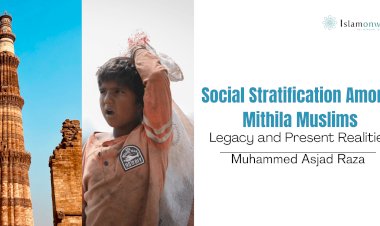Major Female Figures in Islamic Jurisprudence: The Medieval Period - 2 (Part Four)
Sister of Ismāʿī l bin Yaḥyā Al-Muzani[1]
Although her name was unknown, the sister of Imām Muzani,[2] was a disciple of Imam Shāfiʾī. Imam Rāfi has reported from her on Zakāt related matters. Imam Muzani has mentioned about his sister in his “Mukhtaṣar”.
She was the maternal granddaughter of Qāḍi Fakruddīn Muḥammad al-Qayāli, who gave her special care and took her to great scholars of Makkah and Egypt. When her first life partner passed away, she was remarried to a Māliki scholar. Imam Sakhāwi says: “She was a lady who ruminated about Allāḥ and Prophet, and very concerned in studying Ḥadīth and performing Tahajjud and other good deeds.”
Zulaykha bint al-Qāḍi Ismāʿīl bin Yusuf al-Shāfiʿī
She was the daughter of famous Shāfiʿī scholar Qāḍi Ismāʿīl bin Yusuf and grandmother of Imam Rāfi. According to her grandson, she used to issue fatwā on female related issues like ʿIddah and menses. Imam Rāfi further adds that his mother was excellent in reporting Ḥadīth.
Amatul Wāḥid[3]
Amatul Wāḥid bint Qāḍi Abu ʿAbdillāh bin Ismāʿīl bin Muhammad al-Maḥāmilī was a scholar, jurist, mufti, and mathematician from Bagdad.[4]. Her grandfather Ismāʿīl al-Ḍabbi al-Maḥāmilī was a scholar of Ḥadīth from Baghdad who even learned Ḥadīth from some close students of Imam Mālik. Her father was the author of al-Lubāb fī Fiqh al-Shāfiʿī.[5]
She studied from her father and other famous teachers including Ismāʿīl bin ʿAbbās al-Warrāq, Abdul Ghaffār bin Salama al-Ḥimsi, Abul Ḥasan al-Miṣri, and Ḥamza al-Ḥashimi al-Imām. According to Khatīb al-Baghdādi, she was the most dedicated women of Shāfiʿī School, specializing in inheritance laws, syntax, logic, and mathematics along with memorizing Quran.[6] She used to issue fatwā along with Abu ʿAlī bin Abu Hurayrah.[7] Moreover, she showed her ability in the court of Baghdad. This great scholar expired in 377 AH.[8]
Also read : major female figures in islamic jurisprudence the medieval period-part-three
Amat al-Laṭīf was born in a scholastic family as the daughter of Nāṣir Abdul Raḥmān bin Najm, who was an expert in Ḥanbalīte school. She lived during the caliphate of ayyūbids, whereas her father accompanied Salāḥudin in recapturing the Dom of Maqdis.
She served Rabīʿa Khātūn, the daughter of Salāḥudin ʿAyyūbi and wife of Irbal. She was beloved to Rabīʿa Khātūn because of her prettiness and high status among people. Rabīʿa built a Ḥanbalī Madrasah, albeit she was an adherent of Imam Shāfiʿī and appointed Laṭīf’s father as a teacher. Moreover, she also appointed Laṭīf as a lecturer in the Madrasa of Damascus to teach basic jurisprudence for women.
However, after Rabīʿa’s period, Amat al-Laṭīf faced many problems to the extent that she was imprisoned, and her Madrasah was closed. Later, after getting released, she was married to Ashraf, the ruler of Ḥims. Soon after, they left the country and settled in ‘Watal Bashīr’, leading a peaceful marital life. She authored uncountable works in jurisprudence, history, and Qur’an, but the titles are unknown. Many institutions were established in Damascus as an honor for this great scholar after her demise in 653.
Zaynab bint Makki bin ʿAlī bin Kāmil (Ḥanbalī) [9]
Zaynab bint Makki bin ʿAlī bin Kāmil, also known as Ummu Aḥmad, was a reputed Islamic jurist. She learned from Imām al-Ḥanbal, Ibn Tabraz, Abdul Majd al-Karābīs, and Shams al-ʿAṭār. Ibn Sakīna, As’ad bin Saʿīd, ʿAfīfa al-Farqāniyya and Abdul Zāhir al-Thaqāfi gave her permission (Ijājah) to report Ḥadīth from them. She reported Ḥadīth even in her 60th of age. Furthermore, so many reputed scholars such as Abu ʿAbdIllāh al-Barzāli, Abū Muḥammad, abū ʿAmr bin Hājib, ibn Shaqīʿat and several women scholars also reported from Zaynab. Those scholars who reported from her are Dimyāṭī, Saʿdudīn al-hāri, Zaynuddīn al-Fārūqi, ʿAbdul Karīm al-Mazī, Zaynuddīn. She passed away in 688 AH.
Fāṭimah, daughter of ʿAyyāsh bin Abdul Fatih, is known as Ummu Zaynab. She was a Ḥanbali scholastic figure from Baghdad.[10] This perfect jurist is a great orator, worshipper, kind-hearted, fatwā issuer, humble, ascetic leader, religious preacher and well experienced in all Islamic disciplines. She approached Fiqh[11] with enough concern.
She learned Islamic jurisprudence from Shamsuddīn bin Abū ʿAmr and others. If she got stuck on any juridical issue, she used to seek fatwā from Ibn Taymiyyah.
She could formulate independent interpretations on legal (ijtihad) and theological matters. As a crowd-pulling preacher, she expanded her domain from Syria to Egypt and disseminated Islamic thought worldwide. She was believed to live almost 80 years and died in 714 AH at the holy night of ʿArafa.
Sitt al-Wuzarā bint ʿAmr [12]
Situl Wuzara’ bint ʿAmr bin ʿAsad bin al Mānja al-Tanūkhiyya[13] was a Ḥanbali female scholar from Damascus and was known as “The minister”. She was an expert in jurisprudence and eligible in handling Ḥadīth. She was born in Damascus in 634.[14]
She learnt Islamic knowledge and Qur’an from her father, and Musnad al-Shāfiʾī and Sahih al-Bukhāri from ʿAbdullāh bin al Zaydi.[15] She set out a journey to Damascus and Egypt to report Ḥadīth and performed Ḥajj twice during the journey. Ibnu Taghri al-Bardi says, “she travelled consecutively for many years and numerous people from various nations came to listen to her lectures”. Her demise was in 719 at Qāsiyūn of Damascus at 92.
ʿĀyisha bint al-Majd[16]
ʿĀyisha bint al-Majd Ummu Muḥammad al-Saqādisiyya[17] was a great Ḥanbali scholar.[18] She started learning Islamic jurisprudence from her grandfather, and after his demise, she continued studying Ḥanbali Fiqh from other scholars, ignoring her physical weakness. She wrote a book ‘Asharatul Aḥādīth ʿan ʿAshrāt Minal Mashāikhi Jāzu li ʿĀyisha bint Abū al Majd bint Qudāmah’ which is available in Damascus library.[19]
Reference
[1] Abdul raḥīm bin Ḥasan al asnavi, Tabaqat al shāfi,(Riyad:Darul Ulūm,1401 h)p:44,v:1
[2] Imām Muzni was one of the prominent companions of imām shāfi (r). He was an eminent scholar of Shafi school, mujtaḧid and pious man. He authored many authentic texts. Imām Muzni passed away in 264.
[3] Shamsuddīn Abul Muẓafar Yūsuf bin Qarḍa’ and ʿAli bin ʿAbdullāḧ, Mirāthu Zamān fī Tarīk al A’yan.(Damascus:Darul Risala al ʿĀlamiyya, 2013),P:18,V:25
[4]Ibnu Taghri al Bardi, al Nujūmul Zāḥira fī mulūki Miṣr wa Qāḧira (N.P),P:439,V:1
[5]Shamsuddīn Muḥammad bin Aḥmad al Dhaḧābi, Tārīkul Islam wa wafāyathul Mashāḧirīval Aa’lam,(Beirut:Darul Kithabul Arabi,1987),P:607,V:26
[6] Abd al-Rahman bin Ali bin Muḥammad bi Jouzi, al Mutʿalllim fī Tārīkil Mulūk wal ʿUmām,(Beirut:Darul Ṣādir,1358 H), P:138,V:7
[7] Aḥmad binʿAli Abū Bakr al Khaṭīb al Bagdadi,Tārīku Bagdad,(Beirut:Dārul Kutubil ʿIlmiyya.N.D),P:446,V:14
[8] Shamsuddīn bin Muḥammad bin Aḥmad bin Uthman al Naḧaji, Tārīkul Islam wa wafāyatil Mashāḧirī val A’lam,(Beirut:Darul Kutubul Arabi,1987),P:607,V:26
[9] Khalīl bin ʾAybak al Ṣafdi,al Wāfi bil Wafāyath,(Germany,N.d),P.67-68,V.15, Khayr ul Dīn Fāris al Zarkāli, al A’lam, P:109,V:3
[10] Ibnu Ḧajar al Asqalāni,al Durarul Kaminat fi A’yanil Miʿāti Thamina,(Cairo:Darul Kuthub, n.d),P:307-308,V:3
[11]Ibnu Rajab al Ḥanbaliyya,al Dalilu ala Ṭabaqātil Ḥanābila,(Beirut:Darul Ma’rifat,N.D), V:2,P:467-468,
[12] Tājudīn ʿAli Bin ʿAli Bin Abdul Kāfi al Subki, Ṭabaqatu Shāfiyyāth al Kubra, (Saudi Arabia, Hajr li Thaba’th Val Tawzi’,N.D)P:127,V:9
[13] Tājudīn ʿAli Bin ʿAli Bin Abdul Kāfi al Subki, Mu’jam al Shuyūkh,(Darul Garbil Islami,2004),P:63,V:1
[14] Abdul Ḥayy bin Aḥmad ,Shadarathu Dhaḧāb ,P, 40,V.6
[15] Ibnu Kathīr al Dimashkī,al Bidāya val Nihāya,(Cairo:Darul Fikrul Arabi,N.D),P:79,V:14
[16] Abdul Ḥayy bin Aḥmad ,Shadaratu Dhaḧāb,P:765,V:7
[17] Ibnul Mulāqān Sirājudīn Abu Ḥafs ʿAmr bin Ali bin Aḥmad, al ʿAqdul Madhḥab fi Ṭabaqāt Hamalathil Madhab, (Beirut:Darul Kuthub al ʿIlmiyya,1997),P:523,V:1
[18]Abu Muḥammad al Ḥayyib bin ʿAbdullāḧ bin Aḥmad Ali ba Makrama, Qaladath al Naḧr fi wafāyath A’yani Daḧr(Jiddah: Darul Minhaj,2008), V:5,P:463,
[19] Al Yafi, Mīrāthul Jinan va Ibrathil Yaqḍān fi Ma’rifath Hawaithi Zaman, (N.P), V:2, P:229
(Sayyed Mashur Hudawi , Lecturer, Quran Department, Straight Path International School)
Disclaimer
The views expressed in this article are the author’s own and do not necessarily mirror Islamonweb’s editorial stance.
























Leave A Comment